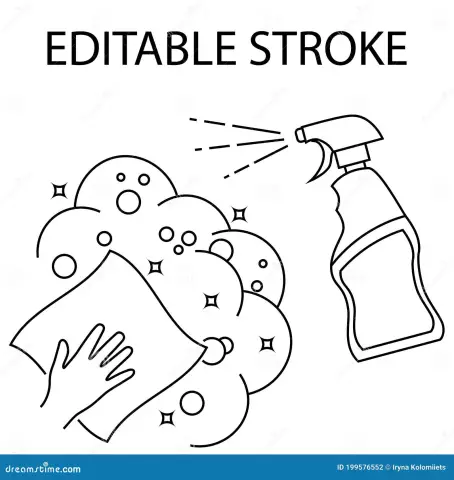- Author Rachel Wainwright [email protected].
- Public 2023-12-15 07:39.
- Last modified 2025-11-02 20:14.
Hernia

Pathological processes in the body, in which there is an intracavitary protrusion and infringement of any organs, are combined under the general name of a hernia and, according to their localization, are divided into several separate types.
Types of hernias
1. Inguinal hernia
The most common type of disease is an inguinal hernia. According to medical statistics, it is inguinal hernias that account for more than 80 percent of all external abdominal hernias. Most often, an inguinal hernia occurs in men, which is due to the peculiarities of the anatomical structure of the male body.
According to its etiology, this type of hernia is divided into acquired and congenital inguinal hernias.
The symptoms of an inguinal hernia include:
- Acute pain in the groin;
- a burning sensation that sharply intensifies with physical exertion;
- in most cases, there is a characteristic protrusion in the groin area (which in men can descend into the scrotum).
To establish the most accurate diagnosis of an inguinal hernia and its location, patients are assigned an ultrasound examination of the inguinal canal.
2. Umbilical hernia
Umbilical hernias are most commonly diagnosed in women. This fact is due to the fact that pregnancy and childbirth tend to weaken the umbilical muscle ring, into which the contents of the peritoneal cavity can protrude: the loops of the large and small intestine, the omentum, as well as the stomach wall.
Of particular danger are cases of infringement of an umbilical hernia, in which patients develop and rapidly progress to a state of acute intestinal obstruction.
Symptoms of an umbilical hernia include:
- pain, significantly aggravated by physical exertion, coughing, sneezing;
- nausea;
- sudden urge to vomit;
- an increase in the diameter of the umbilical ring;
- bulging in the umbilical ring.
For a specialist, the diagnosis of an umbilical hernia is not particularly difficult, but with irreducible hernias, to exclude a metastatic tumor of the umbilical ring, patients are prescribed additional methods of instrumental examination.
3. Intervertebral hernia
The most common explanation for persistent and unexplained back pain is a herniated disk. This pathological condition manifests itself under the condition of protrusion of the fibrous ring into the intervertebral space, followed by infringement and rupture of its contents.
At the place of occurrence, intervertebral hernias are divided into the following subspecies:
- hernia of the lumbar spine;
- hernia of the thoracic spine;
- hernia of the cervical spine.
The main reason for the occurrence of intervertebral hernia, of course, can be attributed to the state of dehydration, in other words, drying of the intervertebral disc. A decrease in normal fluid replenishment in the intervertebral space leads to stagnation, then to ischemia, inflammatory edema and, as a consequence, acute pain syndrome in the spine.
Symptoms of a spinal hernia include:
- varying degrees of pain syndrome;
- headaches, pain in the neck, shoulders, dizziness (with intervertebral hernia of the cervical spine);
- pain in the shoulder joints, shoulder blades, in the chest (with intervertebral hernia of the thoracic region);
- pain in the lumbar region, pain and numbness in the lower extremities, in the buttocks (with intervertebral hernia of the lumbar spine).
Hernia treatment

Conservative treatment of a hernia is possible only in cases where there are serious contraindications to surgical intervention: acute infectious diseases, diseases of the cardiovascular system, late pregnancy, etc., the patient's categorical refusal from surgery is also taken into account. In addition, the lack of need for surgery is often due to the age of the patient. Hernias in infancy, as a rule, go away by themselves, provided that the mobility of the hernial sac is limited.
In the vast majority of cases, the treatment of a hernia consists in its surgical excision. The operation is performed under local or general anesthesia and is the separation and opening of the hernial sac, lowering it into the abdominal cavity and the implementation of special plastics to eliminate the hernial orifice.
YouTube video related to the article:
The information is generalized and provided for informational purposes only. At the first sign of illness, see your doctor. Self-medication is hazardous to health!






